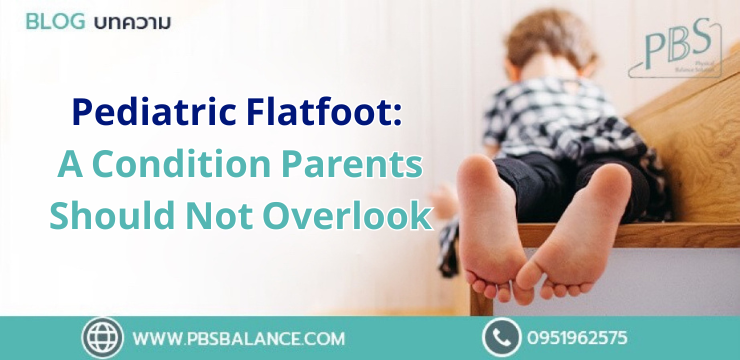
Every parent wishes for their child to be born healthy and strong. However, not everything always goes as hoped. One condition commonly seen in children is pediatric flatfoot. At first glance, it may seem harmless or purely cosmetic, but in reality, it is a condition that warrants close attention and early management.
This article aims to provide a comprehensive understanding of pediatric flatfoot, emphasizing the importance of early detection and appropriate treatment to support healthy musculoskeletal development in children.
What Is Pediatric Flatfoot?
Pediatric flatfoot, or pes planus, refers to a condition where the arch of a child’s foot appears flattened, causing the entire sole to come into contact with the ground. While this may appear abnormal in older children or adults, it is important to note that all children are born with flat feet.
This is due to the presence of a fat pad in the arch area, which obscures the arch and gives the appearance of a flat sole. Research has shown that the development of the three anatomical arches of the foot—medial longitudinal, lateral longitudinal, and transverse—typically begins around the age of 3. As children grow and their foot structure matures, these arches naturally form and become more defined, with most children developing a normal arch by age 5. This progression is partly due to decreased flexibility and increased stability of the foot over time.
The arches of the foot play a critical role in:
- Absorbing impact forces
- Distributing weight and torsional forces
- Enhancing gait efficiency
- Supporting the biomechanics of walking, running, and other physical activities
Thus, evaluating for persistent flatfoot is generally more accurate after age 5, at which point treatment may be considered if the condition persists or is symptomatic.
Why Flatfoot in Children Should Not Be Ignored
Flatfoot was often dismissed as a minor issue, with the belief that it had little impact on daily life. Many assumed that since children could still walk, study, and engage in activities, there was no cause for concern.
However, recent studies have highlighted the broader implications of untreated flatfoot, especially without monitoring. While some children with flatfoot may experience no immediate pain, the long-term consequences can include:
- Foot and heel pain
- Tendon strain or rupture
- Ankle, knee, or hip discomfort
- Postural misalignment
- Increased risk of musculoskeletal injuries
- Development of chronic conditions such as overuse injuries or office syndrome (repetitive strain injury)
In fact, children with undiagnosed foot deformities may later develop symptoms commonly associated with adult conditions, such as lower back pain or musculoskeletal imbalances, especially when entering the workforce or leading an active lifestyle.
What Should Parents Do?
If parents observe any signs of foot deformity, imbalance, or pain in their child, especially beyond the age of 5, early evaluation by a specialist is strongly recommended.
Management may include:
- Clinical assessment of foot posture and function
- Gait and biomechanical analysis
- Use of custom-made insoles to restore foot alignment and prevent long-term complications
At PBS, we offer expert consultation by specialized professionals who are trained to assess foot development. We provide personalized recommendations, including the design of custom orthotic insoles that support proper foot posture, optimize movement, and prevent further musculoskeletal issues. Follow-up evaluations help ensure that the child continues to develop in a healthy and pain-free manner—now and in the future.
If you continue to experience persistent foot pain despite trying all natural treatment methods, consult a specialist promptly. At PBS, our team of foot care specialists provides services including custom orthotic insoles for plantar fasciitis and corrective devices for foot alignment. These solutions are personalized to treat the root cause and deliver the best possible outcomes.
Facebook: PBSofficial.TH
Line Official: @pbs.official
Source: